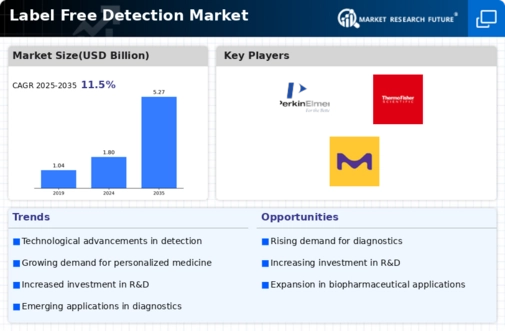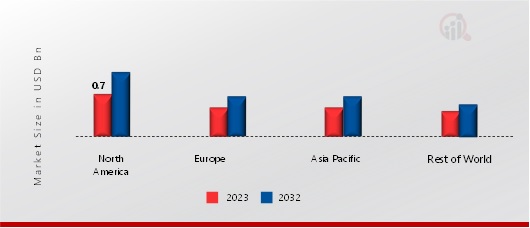Growing focus on personalized medicine is driving the market growth
Market CAGR for Label Free Detection is being driven by the growing focus on personalized medicine. Label-free detection technologies constitute a pivotal cornerstone within the realm of personalized medicine, wielding the capacity to unearth and authenticate biomarkers tethered to precise diseases or demographic subsets within patient cohorts. The manifold benefits they proffer, including real-time surveillance, heightened sensitivity thresholds, and the capability to scrutinize biomolecular interactions sans the crutch of labels or tags, accentuate their indispensability.
By meticulously parsing through the intricacies of biomolecules like proteins, nucleic acids, and metabolites, these label-free detection methodologies engender a conducive environment for the formulation of personalized therapeutic modalities, meticulously calibrated to harmonize with the idiosyncratic genetic compositions, biomarker signatures, and pathological idiosyncrasies endemic to each patient's clinical panorama. As the pendulum of healthcare sways inexorably towards the orbit of personalized medicine, the resonance for label-free detection technologies reverberates with escalating fervor, poised to orchestrate a symphony of market expansion and technological evolution, unfurling new vistas of diagnostic precision and therapeutic innovation.
The rising demand for drug discovery and development is a significant driver of the Label Free Detection Market due to the critical role label-free detection technologies play in accelerating the drug development process. Label-free detection methods offer advantages such as real-time monitoring, high sensitivity, and the ability to study biomolecular interactions without the need for labels or tags, making them essential tools in drug discovery workflows. These technologies enable researchers to screen potential drug candidates, study target-ligand interactions, and assess drug efficacy and safety profiles more efficiently and accurately.
By providing valuable insights into biomolecular interactions and drug-target interactions, label-free detection technologies contribute to the identification and validation of novel drug targets, the optimization of lead compounds, and the development of more effective and safer therapeutics, thus driving market growth in the Label Free Detection Market.
Increasing research funding and investments are driving the Label Free Detection Market by fueling innovation, technological advancements, and market expansion. With growing recognition of the importance of label-free detection technologies in various fields, such as drug discovery, diagnostics, and biopharmaceutical development, there has been a surge in investments from government agencies, private investors, and venture capital firms. These investments support research and development efforts aimed at improving the sensitivity, throughput, and data analysis capabilities of label-free detection systems. Additionally, funding initiatives facilitate the translation of research findings into commercial products and applications, accelerating market adoption.
As research institutions, academic laboratories, and biotechnology companies continue to invest in label-free detection technologies, the market is expected to witness sustained growth with enhanced capabilities and broader applications across the life sciences and healthcare sectors. Thus, driving the Label Free Detection market revenue.
For instance, Bruker Corporation unveiled the introduction of nanoElute 2 nano-LC, MetaboScape, and TASQ 2023 software to bolster research in protein-protein interactions (PPIs) and metaproteomics applications. The nanoElute 2 integrates nano-LC advancements, enabling automated single-cell sample preparation from label-free ProteoCHIP on the CellenONE platform, while the software supports fluxomics and the latest advances in PaSERs intelligent acquisition.
The ongoing advancements in label-free detection technologies are poised to revolutionize the landscape of biomedical research and diagnostics, enhancing the precision and efficiency of molecular interactions analysis.
National Institutes of Health





